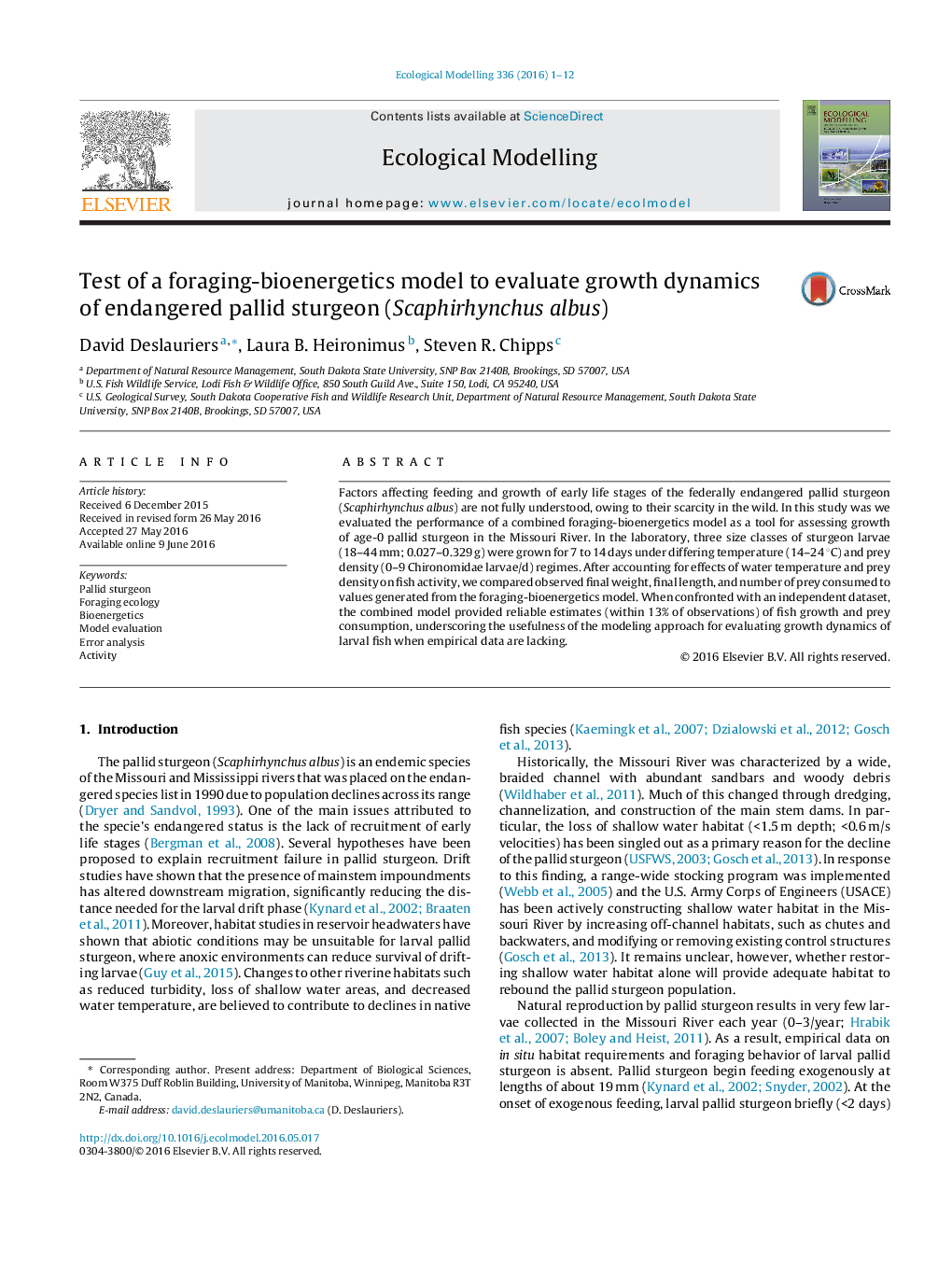| Article ID | Journal | Published Year | Pages | File Type |
|---|---|---|---|---|
| 4375517 | Ecological Modelling | 2016 | 12 Pages |
•A growth model is proposed for age-0 pallid sturgeon.•Performance of the model is dependent on activity levels.•Once calibrated, the model was able to predict growth accurately.
Factors affecting feeding and growth of early life stages of the federally endangered pallid sturgeon (Scaphirhynchus albus) are not fully understood, owing to their scarcity in the wild. In this study was we evaluated the performance of a combined foraging-bioenergetics model as a tool for assessing growth of age-0 pallid sturgeon in the Missouri River. In the laboratory, three size classes of sturgeon larvae (18–44 mm; 0.027–0.329 g) were grown for 7 to 14 days under differing temperature (14–24 °C) and prey density (0–9 Chironomidae larvae/d) regimes. After accounting for effects of water temperature and prey density on fish activity, we compared observed final weight, final length, and number of prey consumed to values generated from the foraging-bioenergetics model. When confronted with an independent dataset, the combined model provided reliable estimates (within 13% of observations) of fish growth and prey consumption, underscoring the usefulness of the modeling approach for evaluating growth dynamics of larval fish when empirical data are lacking.
